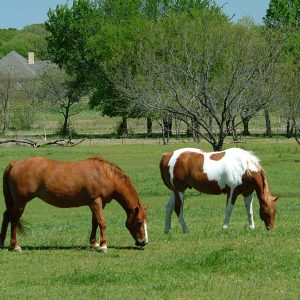
Clarifying Carbohydrates Part II
There are many types of carbohydrates in equine diets, including simple carbohydrates, rapidly fermentable carbohydrates, and complex, slowly fermentable carbohydrates. Your horse digests each type of carbohydrate differently. Some types of carbs are better for your horse than others. Click here for Clarifying Carbohydrates Part I for information on simple carbs. This time we will reviewing rapidly fermentable carbs.
Rapidly fermentable carbohydrates
These types of carbs are polysaccharides that are made up of numerous single sugars known as monosaccharides. They cannot be broken down in the foregut by digestive enzymes and gastric acid. Instead, after they are ingested, they pass into the hindgut (cecum and large intestine), where they are digested by the microbes naturally residing there. These carbohydrates are called rapidly fermentable carbohydrates because of the short amount of time it takes microbes to ferment them in comparison with other fermented carbohydrates. There are several kinds of rapidly fermentable carbohydrates.
Resistant starch and fructans
There are two types of resistant starches: those that escaped digestion in the foregut due to an overload of starch in the diet and those that require microbial fermentation to be broken down. When microbes in the hindgut ferment starch they produce a byproduct called lactate.
Fructans (sugars found in cool-season grasses) cannot be digested in the foregut either, so they pass through to the hindgut where they are also fermented and produce lactate.
When horses eat too many resistant starches and fructans, large amounts of lactate can be produced in the hindgut. This can be very detrimental to your horse’s health. (More on that in Clarifying Carbohydrates Part III.)
Pectins, gums, mucilages
Often referred to as soluble fibers, pectins, gums, and mucilages are also polysaccharide carbohydrates that require microbial fermentation in the hindgut. The byproducts of microbial fermentation of these carbohydrates are called volatile fatty acids. They are quickly absorbed by the hindgut and used as energy sources by the horse to fuel various functions in the body.
Where are rapidly fermentable carbohydrates found in your horse’s diet?
Rapidly fermentable carbohydrates are found in pasture, hay and grains. Resistant starches and fructans are storage carbohydrates that are stockpiled for use as an energy source by the plant. Soluble fibers are associated with the structure of the plant.
Resistant starches are most commonly found in the seeds of plants or grains (e.g., oats, corn, barley). A large amount of grain in the diet can cause starch overload. Starch overload occurs when an overabundance of resistant starches pass into the hindgut. This condition can lead to multiple health problems in the horse.
Fructans are mainly found in the leaf and stem tissues of pasture plants and hay. Fructan levels in pasture fluctuate daily as well as seasonally. When pasture is cut for hay, fructan levels are reduced slightly because of the drying process. Fructan levels may vary among different types of hay. Consuming large amounts of fructan contributes to disorders in the horse, such as colic and laminitis.
The soluble fibers—pectins, gums, and mucilages—are found in the cell walls of individual plant cells. Cell walls give plants their rigid, upright structure. The soluble fibers are therefore found in pasture and hay. As the plant matures these materials become less available to the horse as an energy source because the cell wall becomes more fibrous and less digestible. Legumes tend to have higher levels of the soluble fibers than grasses because of their different physical structure. Beet pulp, citrus pulp, and soy hulls are other sources of soluble fibers found in the diet. Soluble fibers provide more readily available energy than the more complex fibers because of the ease of fermentation. They are considered an excellent source of energy to the horse.


